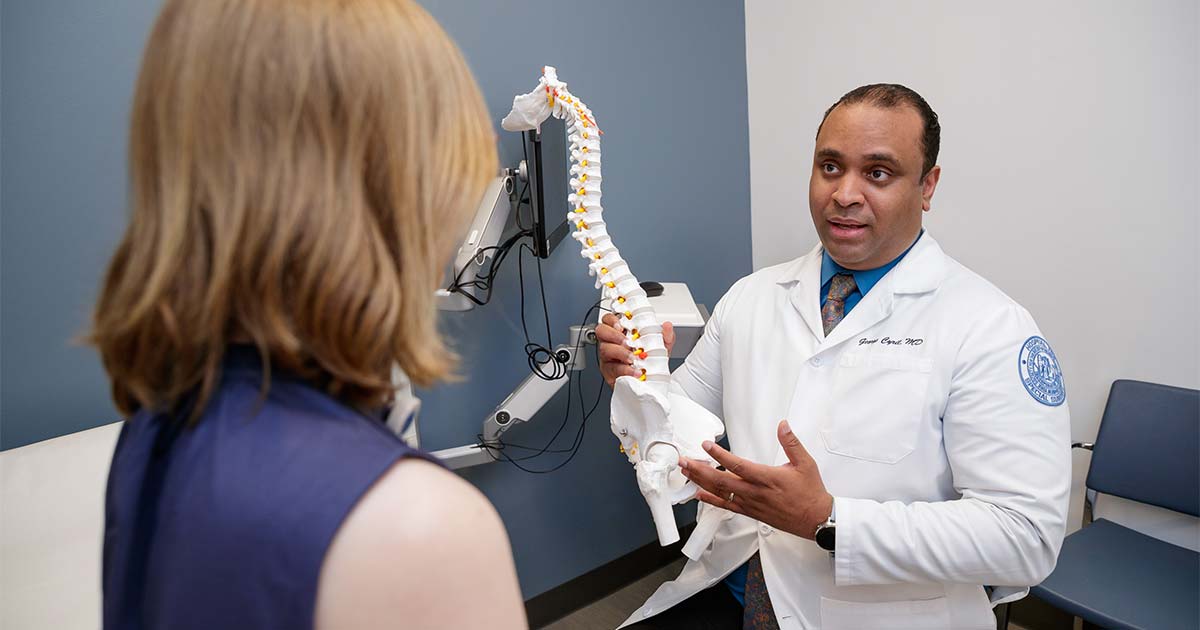3 Signs You Might Need a Hip Replacement
Advice to improve your movement, fitness, and overall health from the world's #1 in orthopedics.
But should you join the ranks of the 1 million or so Americans each year who decide to undergo hip replacement surgery? Cynthia A. Kahlenberg, MD, MPH, a hip and knee replacement surgeon at HSS, offers the following signs for people considering the procedure to determine whether it might be the best choice.

The pain is related to your hip joint itself.
Not all hip pain is the same, and hip replacement surgery isn’t the right option for everyone. The procedure works best for people in whom the joint has deteriorated to the point where bones rub against each other – friction that leads to painful inflammation in the area. This type of pain is often referred to as bone on bone.
Pain focused in the back of the thigh or which seems to radiate down the leg likely stems from a problem in the spine and won’t be corrected by hip surgery. “Seeing your doctor can help make that distinction,” Dr. Kahlenberg says. “It’s very important to differentiate pain coming from the hip versus the spine because spine problems can sometimes lead to pain around the hip. This is a point of confusion that comes up comes up very frequently.”
To confirm the diagnosis of bone-on-bone hip arthritis, you will need to undergo an x-ray of the hip. “People who experience the best results after hip replacement surgery are those who have bone-on-bone arthritis,” Dr. Kahlenberg says. “Bone-on-bone arthritis can occur due to a variety of reasons including general wear-and-tear, trauma to the hip, or congenital problems such as hip dysplasia. But in order for a patient to benefit most from hip replacement surgery, the hip joint should be at a point where the arthritis is bone-on-bone.”
Nothing else is working.
Before recommending surgery, your doctor will likely suggest a range of conservative treatments. “At HSS, we try to exhaust all conservative measures before turning to surgery,” Dr. Kahlenberg says. These include medications like nonsteroidal anti-inflammatory drugs such as ibuprofen, as well as corticosteroid injections and physical therapy.
Maintaining a healthy weight is also important because extra pounds put strain on joints. For most people, at least six weeks of these conservative therapies without improvement are required before your doctor will recommend talking with a specialist about surgical options, Dr. Kahlenberg says.
Your pain is severe enough to interfere with your life.
Everyone loses some function with age, and our joints experience wear and tear over time. A certain amount of that is expected. But for some of us, the decline is faster than normal and the pain is severe enough to keep us from doing the things we used to love—walking, biking, playing tennis and more.
“There are certain limitations that come with age, but when the limitations are specifically due to the hip—limiting the ability to walk or go up and down stairs, for example—that’s when hip replacement can be an option and can be extremely successful in restoring people to higher activity levels,” Dr. Kahlenberg says.
She tells her patients that if they’re at a point where they don’t want to live with the current pain they’re having, that’s when they know they should ask their doctor about surgery. “Hip replacement is major surgery, but for the right patient, it can be an amazing outcome,” she says.
As the leading center for hip replacement surgery in the United States, HSS offers patients the latest advances in treatment. From the surgeons to the physical therapists, everyone in the hospital is specifically focused on orthopedic protocols and procedures, Dr. Kahlenberg says.
“We have excellent, specialized anesthesiologists who make the surgery and early postoperative period as painless as possible,” she says. “We have surgeons using the newest technologies that help reproduce the patient’s anatomy as closely as possible and which can minimize complications associated with the procedure. We have the lowest infection rate in the country for joint replacement surgery. We’re all working together to make the best possible outcome for each patient.”
Published 10/7/2022




